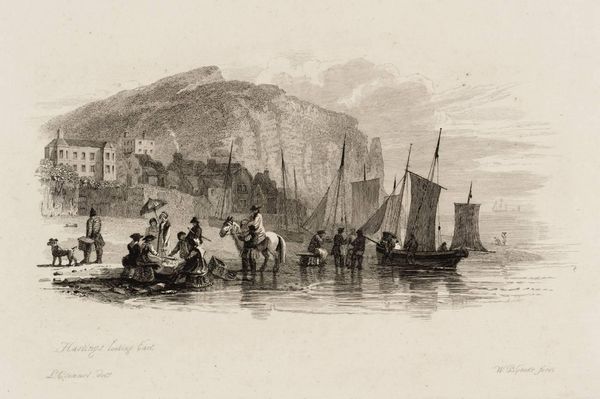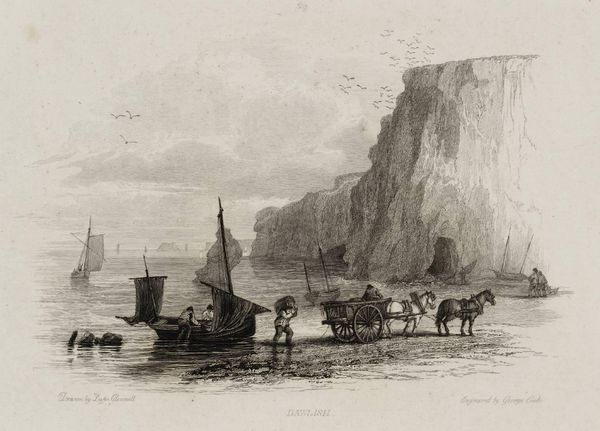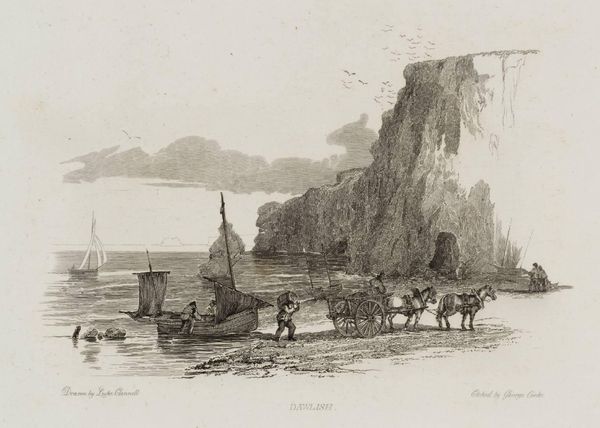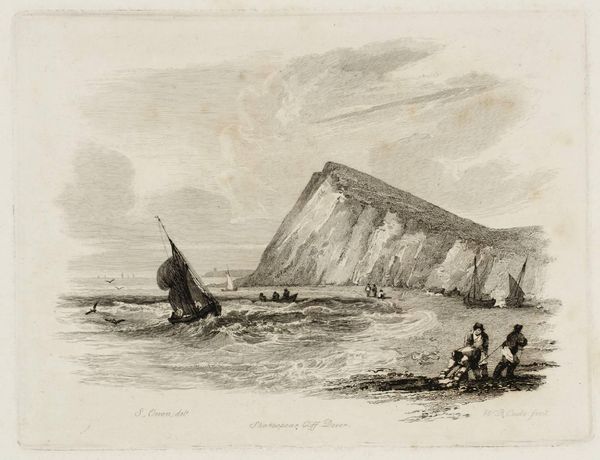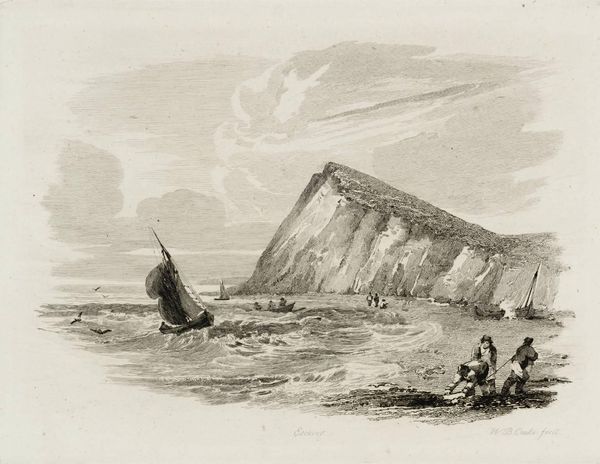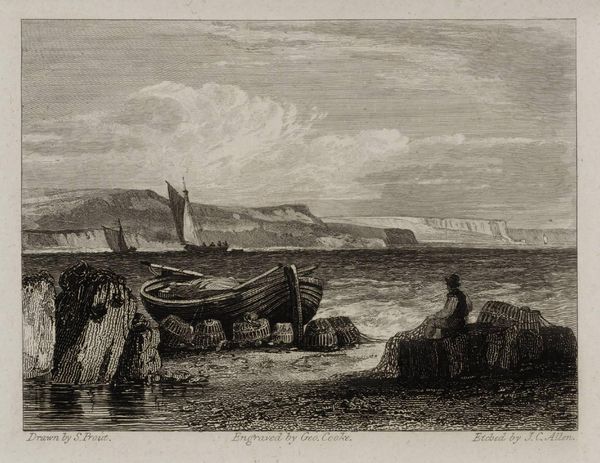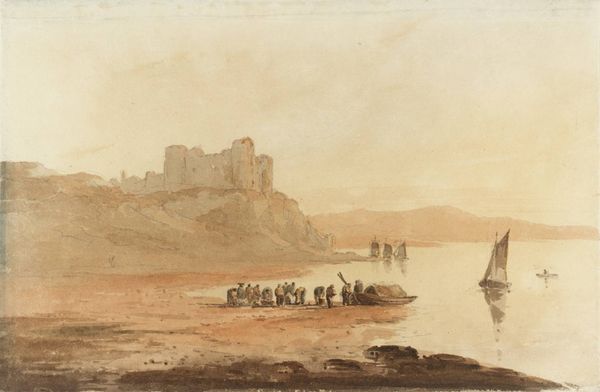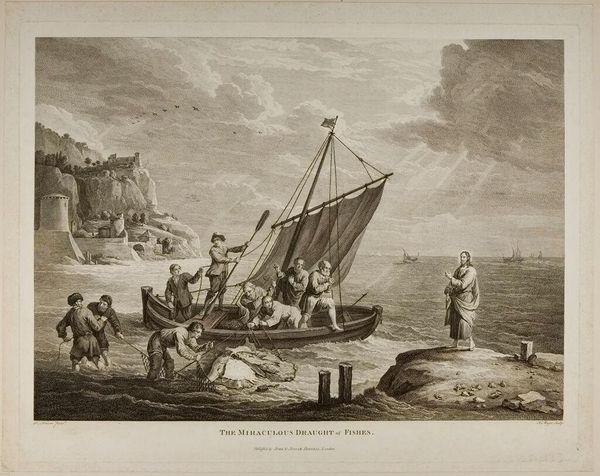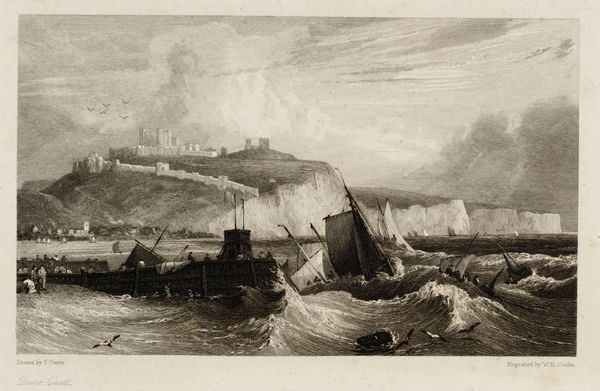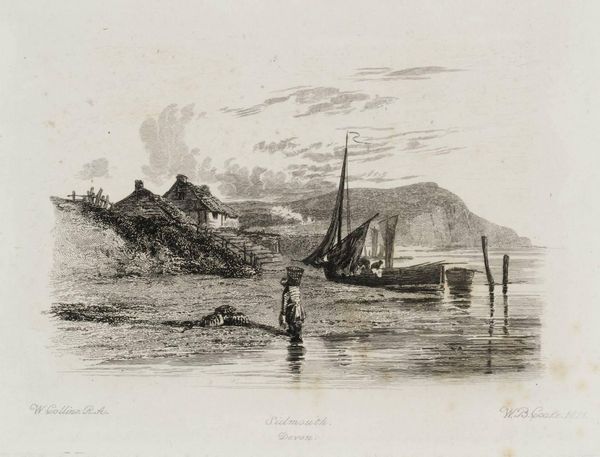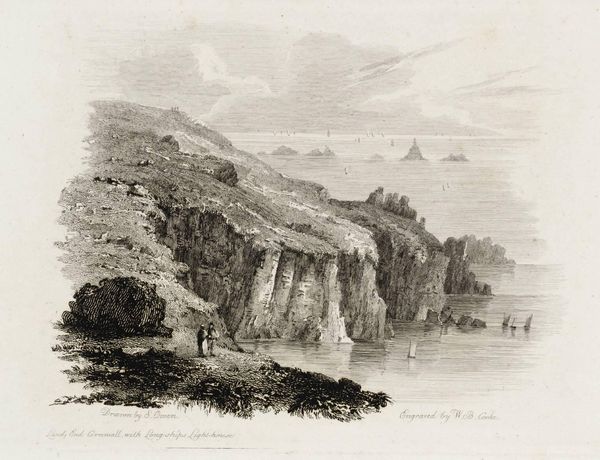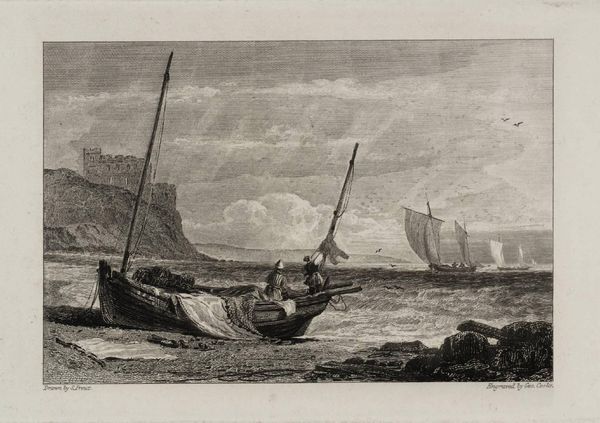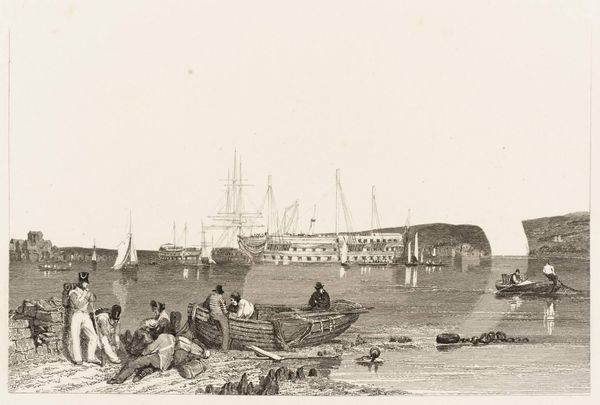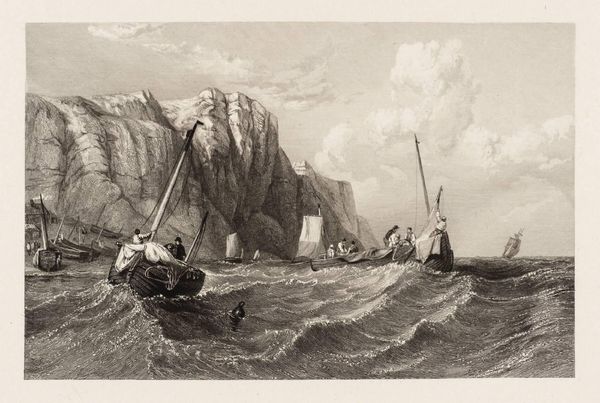
Dimensions: image: 79 x 163 mm
Copyright: CC-BY-NC-ND 4.0 DEED, Photo: Tate
Curator: Luke Clennell's "The Beach at Hastings, Looking East" captures a moment in time, doesn't it? I find it so evocative of early 19th-century seaside life. Editor: It's a fascinating little print. The stark contrast and detail of the figures against the muted backdrop really highlights the industry and labor occurring on this beach. Curator: Precisely! I see a confluence of classes here. The figures on the beach, some perhaps enjoying leisure, others clearly engaged in labor, all positioned against the looming presence of the cliffs and buildings above. What does it say about access and privilege? Editor: The very material of printmaking democratized art, making scenes like this accessible beyond the elite. Think about the paper, the ink, the engraver’s skill—it’s all part of a production chain connecting to larger economic structures. Curator: Absolutely, and it raises important questions about representation and agency. Who is seen, who is unseen, and how are their stories being told? The seaside, here, becomes a stage for social performance. Editor: The beach is a site of labor but also leisure—a meeting point of different social classes. We can practically feel the grit and hear the shouts of the fishermen! It makes me think about our relationship to the sea, then and now. Curator: It really does invite us to contemplate the complexities of history and its impact on our present. A small image, but a powerful conversation starter. Editor: Agreed. There’s a whole world contained in these lines. It shows the work and material conditions that shape our everyday landscapes.
